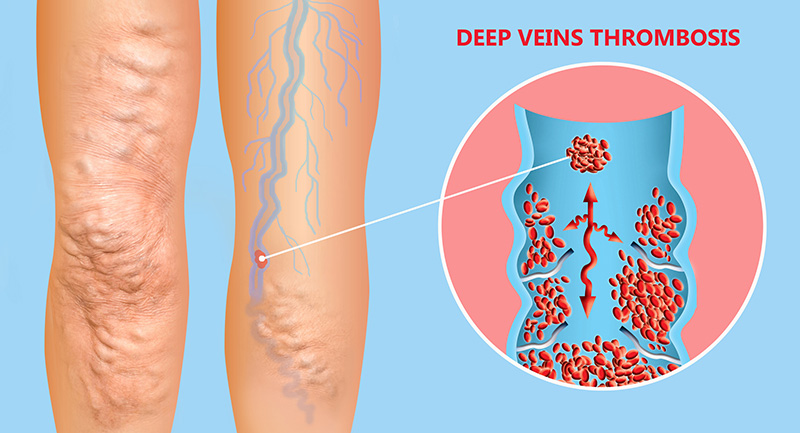Deep Vein Thrombosis

What is Deep Vein Thrombosis or DVT?
Deep vein thrombosis or DVT is the clinical term for a blood clot in the deep veins of the body. Even though DVT can happen in any deep vein in the body, the most widely recognized area is in the deep veins of the leg.
What causes DVT?
The risk factors for DVT are stationary status for extended periods, injury to a vein and certain medical conditions such as obesity, post-surgery, malignancy, and hereditary clotting issues. It has an increased incidence of occurring in air flights >4 hours.
What are the side effects of DVT?
At the point when an individual presents with indications of a DVT, they may notice swelling in the portion of the leg below the vein clot, as it obstructs blood return from this area. As the edema worsens, they may experience leg aching, especially in the calf site, and heaviness or fatigue.
An individual may have no leg manifestations until the clot detaches and lodges in the lungs. This is known as a pulmonary embolus or PE. This causes chest pain and shortness of breath. This can proceed to a life-threatening condition and so requires immediate medical attention.
In the event you notice unexplained swelling in a leg, especially after surgery or hospitalization or air travel, you should get prompt medical evaluation.
How is DVT treated?
For most instances of DVT that are discovered, blood thinners will no doubt be the best treatment. These will prevent the coagulation from progressing and permit the body to break up the clot. We may recommend compression garments as well.
We utilize the term superficial thrombophlebitis to delineate clots in the shallow veins. This much of the time happens in patients who have dilated veins or have experienced trauma to a vein. This is normally treated with applying heat to the affected vein and prescribing anti-inflammatory medication.
SCHEDULE A
CONSULTATION TODAY
With Dr. Miguel Gomez
By filling out our online appointment form
